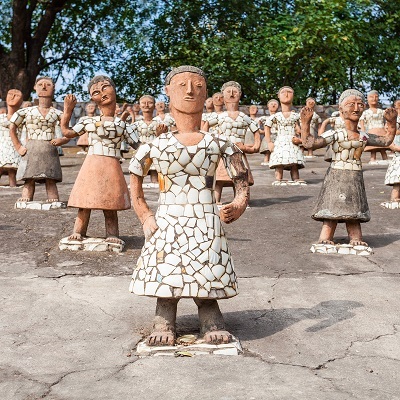

"Medium" in art refers to the materials or techniques used by an artist to create a work of art. This can include traditional materials such as oil paint or charcoal, as well as non-traditional materials like found objects or digital technology. The choice of medium can greatly influence the final result of a piece and can be used to convey a specific meaning or emotion.
Medium can also refer to additives mixed with pigments to change the consistency or application of a paint. In short, medium is an important aspect of the art-making process and can play a crucial role in the final outcome of the artwork.
Medium is the substance or material used to create a work of art. It can include traditional materials such as oil paint, watercolour, or charcoal, as well as non-traditional materials such as found objects, collage, or digital tools.
It is the means by which an artist expresses their ideas and concepts, it is the tool the artist chooses to use to convey their message or artistic expression. The medium an artist chooses can affect the final outcome of a piece of art, and can be used to communicate certain ideas or emotions.
Medium can also be used to describe the style of the artist, some artists are known to work primarily with a specific medium, like Salvador Dali and his use of soft, distorted forms in his paintings.
Medium can also refer to the context in which the artwork is created, like performance art, video, sound, and even food. The medium in this sense is the context of the artwork and how it is presented to the audience.

Performance art, body as medium
Oil paint, for example, is a slow-drying paint that can be layered to create depth and texture. Watercolor, on the other hand, is a fast-drying paint that is known for its transparency and fluidity. Charcoal, another traditional medium, is often used for drawings and is known for its ability to create deep blacks and strong contrast.
Found objects, for example, can be used to create sculpture or collages. Digital tools, such as graphic design software, allow artists to create digital art and animations. These non-traditional mediums have expanded the possibilities for art and have opened up new forms of artistic expression.
A painting done in oil paint can convey a sense of richness and depth, whereas a drawing done in charcoal can convey a sense of immediacy and raw emotion.
Additionally, the medium can also be used to create contrast, for example, a sculpture made of found objects can be used to contrast with a smooth, polished sculpture made of marble.
Medium is not limited to traditional art materials, it can be anything that an artist can use to create a work of art.
Some examples of unusual mediums include: performance art, video, sound, and even food. These mediums are not usually associated with traditional art forms and have opened up new possibilities for artistic expression.
Performance art, for example, involves the artist using their body as a medium to create a work of art. This can include things like dance, theater, and even street performances.
Video and sound can be used as mediums to create installations, animations, and experimental films. These mediums can be used to create immersive experiences for the audience, and can be used to comment on technology and its impact on society.
Food can be used as a medium to create edible art. This can include things like sculpting with chocolate, creating intricate designs with fruits and vegetables, or even creating a meal as a performance.

Medium can also refer to substances that are added to pigments to change the consistency or application of a paint. These substances are used to modify the properties of the paint to make it more suitable for a particular technique or style of painting.
These additives can affect the drying time, transparency, and texture of the paint. For example, a medium that slows down the drying time of the paint would allow the artist more time to blend and layer colors, while a medium that speeds up the drying time would allow the artist to work more quickly and efficiently.
Some examples of mediums used in this way include: linseed oil, turpentine, and varnish. Linseed oil is a drying oil that is commonly used as a medium in oil painting. It is added to the paint to slow down the drying time and to improve the flow and texture of the paint. Turpentine is a solvent that is used to thin the paint and make it more transparent. Varnish is a clear, glossy coating that is applied over a finished painting to protect it and give it a shiny finish.
The use of mediums as additives to pigments can be used to create specific effects on the final painting; for example, adding varnish can give the painting a glossy finish, while adding turpentine can make the painting more transparent.
In conclusion, medium in art is a crucial aspect of the art-making process, it refers to the materials or techniques used by an artist to create a work of art. It encompasses traditional materials such as oil paint or charcoal, as well as non-traditional materials like found objects or digital technology. Medium can also refer to additives mixed with pigments to change the consistency or application of a paint. It is an important aspect to consider when creating a piece of art, as it can greatly affect the final outcome of the artwork.
Q1. What are some examples of mediums used in art?
Ans. Some examples of mediums used in art include oil paint, watercolour, charcoal, found objects, collage, and digital tools.
Q2. Can medium be used to affect the final outcome of a piece of art?
Ans. Yes, the choice of medium can affect the final outcome of a piece of art and can be used to communicate certain ideas or emotions.
Q3. What is the difference between medium and technique?
Ans. Medium refers to the materials or substances used to create a work of art, while technique refers to the methods or processes used to apply those materials.